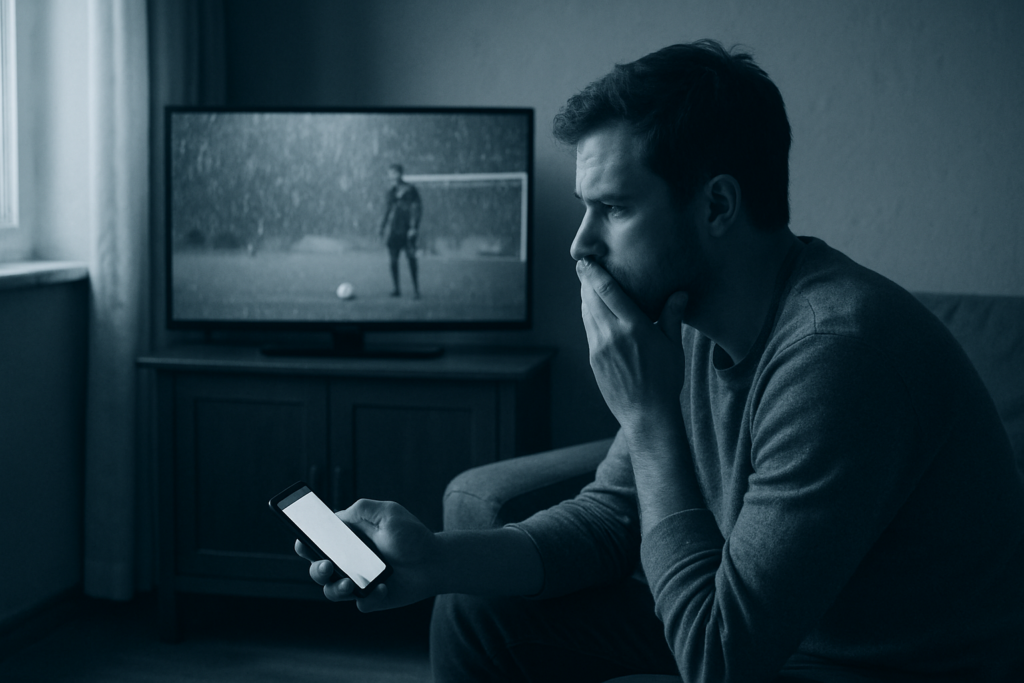As a seasoned football player, I know the thrill of pushing your limits on the field. However, the intense physical exertion combined with soaring temperatures can put players at risk of heat-related illnesses. In this article, I’ll delve into crucial strategies for preventing and treating these conditions to ensure you stay safe and perform at your best during those grueling matches.
From heat cramps to heat exhaustion and potentially life-threatening heat stroke, understanding the signs and symptoms of these illnesses is paramount for every athlete. I’ll share practical tips on staying hydrated, recognizing early warning signs, and taking prompt action to prevent heat-related issues from escalating. By implementing these preventive measures and being equipped with the right knowledge, you can focus on your game without compromising your well-being.
Understanding Heat-Related Illnesses
As a football player, I know the risks associated with heat-related illnesses during intense matches under the scorching sun. To perform at the top of my game, it’s crucial to recognize the signs and symptoms of conditions like heat cramps, heat exhaustion, and heat stroke.
Types of Heat-Related Illnesses
I’ll outline the specific types of heat-related illnesses that football players need to be aware of:
- Heat Cramps: These painful muscle contractions can occur during or after exercise in hot weather. They are often the result of dehydration and electrolyte imbalances.
- Heat Exhaustion: This condition is more severe than heat cramps and can lead to dizziness, nausea, weakness, and even fainting. It’s essential to address heat exhaustion promptly to prevent it from progressing to heat stroke.
- Heat Stroke: The most serious heat-related illness, heat stroke is a medical emergency that requires immediate treatment. It can cause confusion, seizures, and loss of consciousness, posing a significant threat to health.
Why Football Players Are at Risk
Football players face an increased risk of heat-related illnesses due to various factors:
- Intense Physical Activity: The high levels of physical exertion during games and practices can rapidly increase body temperature, making players more susceptible to heat-related issues.
- Equipment and Clothing: Wearing protective gear and uniforms can impede the body’s ability to cool down through sweat evaporation, contributing to the risk of overheating.
- Environmental Conditions: Playing on hot and humid days exposes players to additional heat stress, especially if adequate precautions are not taken to prevent dehydration and heat-related illnesses.
By understanding the types of heat-related illnesses and the specific risks faced by football players, I can better prepare myself to stay safe and perform optimally on the field.
Prevention Strategies for Football Players
To ensure optimal performance and prevent heat-related illnesses, football players must adhere to specific prevention strategies. Implementing proper hydration techniques, acclimatization practices, and wearing appropriate protective clothing and gear are vital aspects to consider for players’ well-being on the field.
Proper Hydration Techniques
Hydration plays a crucial role in regulating body temperature and preventing heat-related issues during football activities. It’s essential for players to hydrate adequately before, during, and after training sessions and games. Monitoring urine color can provide a simple indicator of hydration status – clear urine signifies good hydration, while dark yellow urine indicates dehydration. Electrolyte-rich sports drinks can also be beneficial for replenishing lost minerals during intense physical exertion.
Importance of Acclimatization
Acclimatization involves gradually exposing the body to heat stress to enhance its ability to cope with high temperatures. Football players should undergo a structured acclimatization process before engaging in rigorous training or competitions in hot conditions. This gradual exposure helps the body adapt to the heat, improving sweat rate, and heat tolerance, thus reducing the risk of heat-related illnesses.
Protective Clothing and Gear
The clothing and gear worn by football players can influence their body’s ability to dissipate heat effectively. Opt for lightweight, breathable, and moisture-wicking fabrics that allow sweat evaporation and body cooling. Additionally, ensure that protective equipment like helmets and pads are well-ventilated to prevent overheating. Properly fitting gear also aids in heat regulation, allowing players to maintain comfort and performance levels during physical activities.
Treatment Options for Heat-Related Illnesses

After focusing on prevention strategies, it’s crucial to understand the treatment options available for heat-related illnesses that football players may encounter.
Immediate Response Steps
In cases where a football player shows signs of a heat-related illness such as heat cramps, heat exhaustion, or heat stroke, immediate action is essential. The primary steps to take include:
- Move to a Cooler Area: It’s vital to get the affected player out of the heat and into a cool or shaded area as soon as possible.
- Hydration: Providing the player with water or a sports drink can help rehydrate and cool down the body.
- Remove Excess Clothing: Loosen or remove tight or unnecessary clothing to aid in the cooling process.
- Cooling Measures: Applying cold packs or damp towels to the player’s skin, particularly in areas with a high concentration of blood vessels like the armpits, neck, and groin, can help lower body temperature.
- Monitor and Reassess: Continuously monitor the player’s condition and reevaluate to ensure their well-being is improving.
Advanced Medical Treatments
In severe cases where immediate response steps are not sufficient or if a player’s condition worsens, advanced medical treatments may be necessary. These may include:
- Intravenous Fluids: If dehydration is severe, intravenous fluids administered by healthcare professionals can help replenish fluids and essential electrolytes quickly.
- Cooling Techniques: Advanced cooling methods such as cold-water immersion or ice baths may be used under medical supervision to rapidly reduce body temperature in cases of severe heat stroke.
- Medical Evaluation: It’s essential for players experiencing severe heat-related illnesses to undergo a thorough medical evaluation by healthcare professionals to determine the extent of the condition and provide appropriate treatment.
- Hospitalization: In extreme cases of heat stroke or when the player’s condition is critical, hospitalization for intensive care monitoring and treatment may be required to ensure full recovery.
By being aware of these immediate response steps and advanced medical treatments, coaches, teammates, and medical personnel can effectively address and manage heat-related illnesses in football players to ensure their safety and well-being on and off the field.
Monitoring and Support by Coaching Staff
In overseeing the safety and well-being of athletes, coaches play a vital role in preventing heat-related illnesses. They are responsible for implementing preventive measures and providing immediate support in case of emergencies.
Role of Coaches in Preventing Heat Illnesses
Coaches are instrumental in creating a safe environment to prevent heat-related illnesses among football players. They should educate athletes on the importance of hydration, proper acclimatization, and the significance of suitable clothing to manage body temperature effectively.
Implementation of Cooling Breaks and Shaded Rest Areas
To mitigate the risk of heat-related illnesses, coaches should schedule frequent cooling breaks during training sessions and matches. Designated shaded rest areas should be provided for players to recover and cool down, especially in hot weather conditions. Effective implementation of these strategies can significantly reduce the likelihood of heat-related issues among football players.

 Danielo Fleischeronic is the visionary founder of Awesome Football Network, a premier destination for in-depth football coverage and analysis. His commitment to the sport is reflected in the platform's rich content, which includes breaking news, match analyses, and expert commentary. Danielo’s extensive knowledge and passion for football drive the network’s mission to provide fans with the latest insights and updates from around the world.
In addition to his role as founder, Danielo is also an accomplished article writer. His writing covers a broad spectrum of football-related topics, from tactical breakdowns to player profiles, offering readers a comprehensive understanding of the game. Through his work, Danielo aims to enrich the football experience for enthusiasts and professionals, making Awesome Football Network a trusted resource in the football community.
Danielo Fleischeronic is the visionary founder of Awesome Football Network, a premier destination for in-depth football coverage and analysis. His commitment to the sport is reflected in the platform's rich content, which includes breaking news, match analyses, and expert commentary. Danielo’s extensive knowledge and passion for football drive the network’s mission to provide fans with the latest insights and updates from around the world.
In addition to his role as founder, Danielo is also an accomplished article writer. His writing covers a broad spectrum of football-related topics, from tactical breakdowns to player profiles, offering readers a comprehensive understanding of the game. Through his work, Danielo aims to enrich the football experience for enthusiasts and professionals, making Awesome Football Network a trusted resource in the football community.
